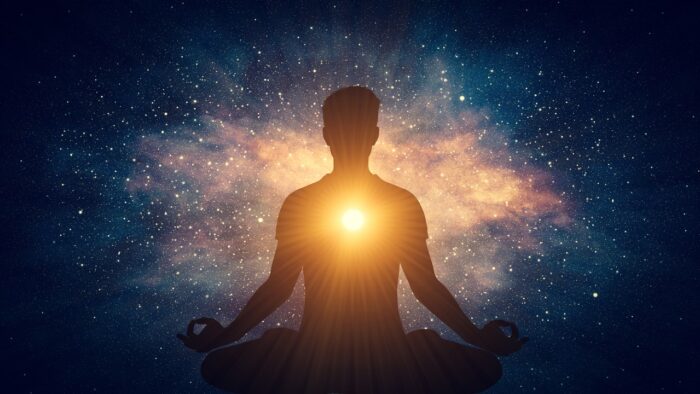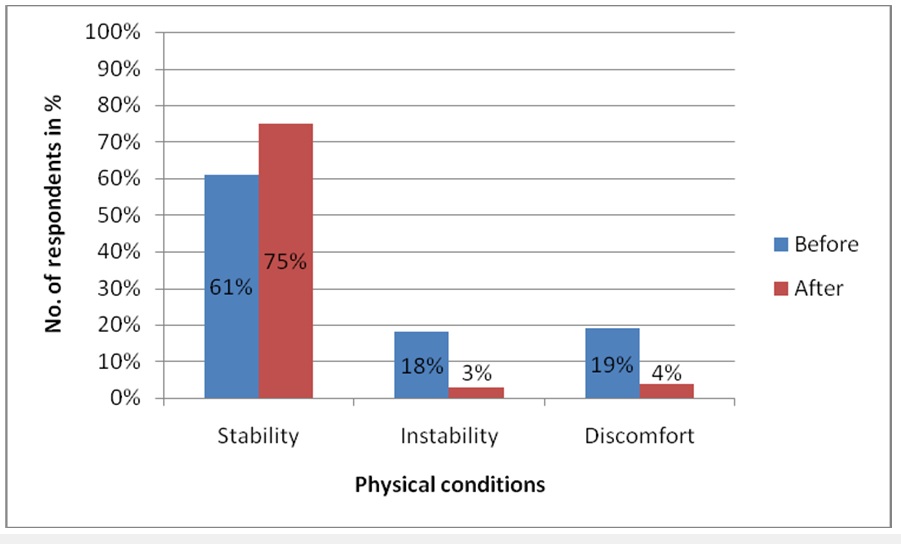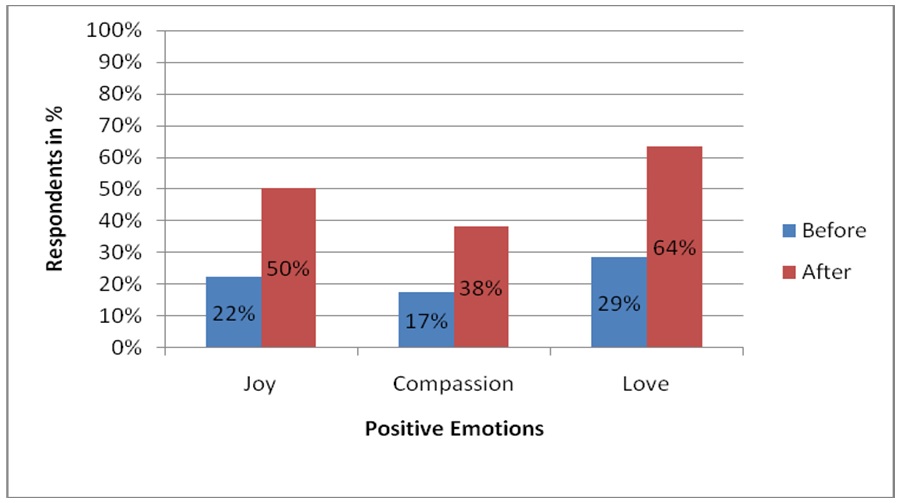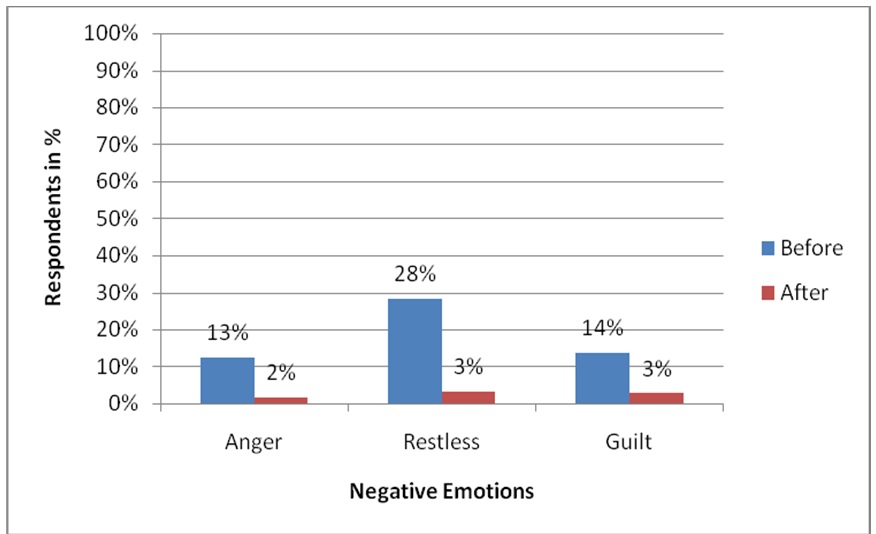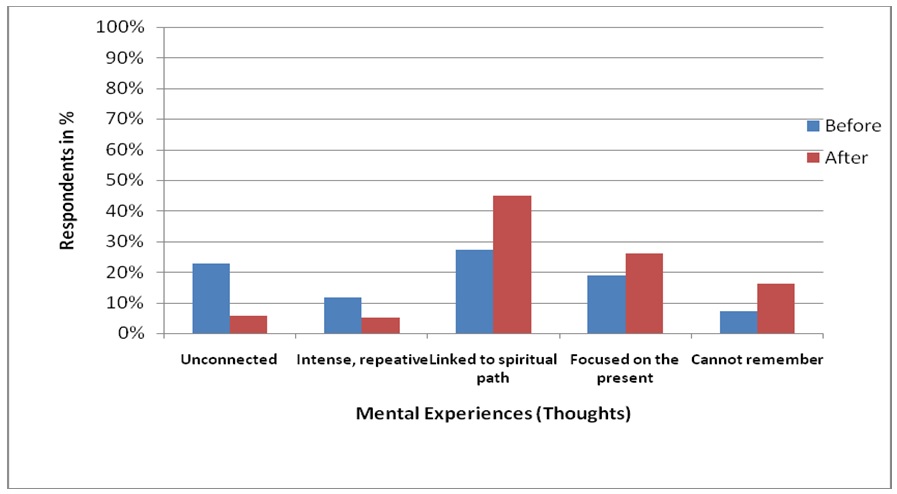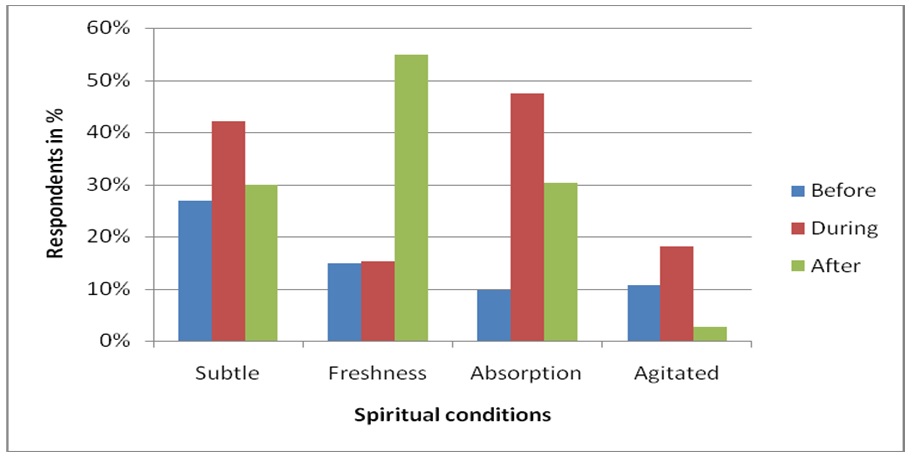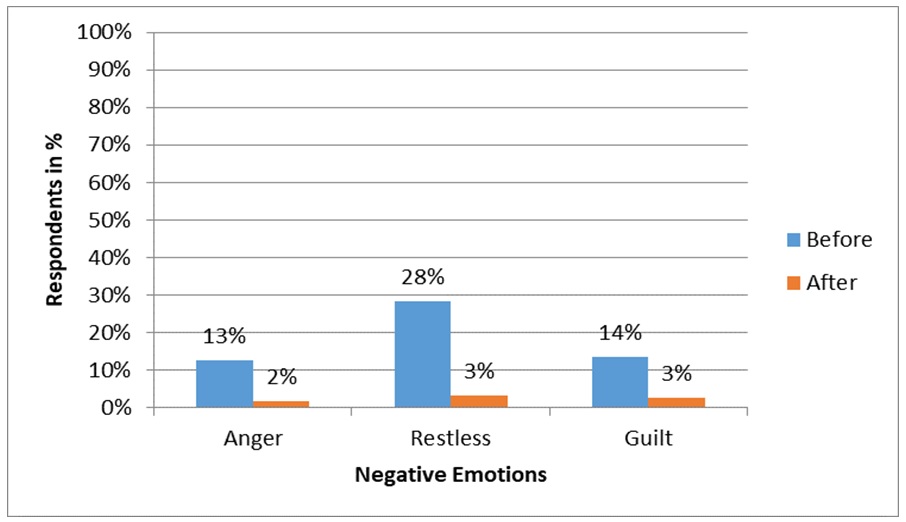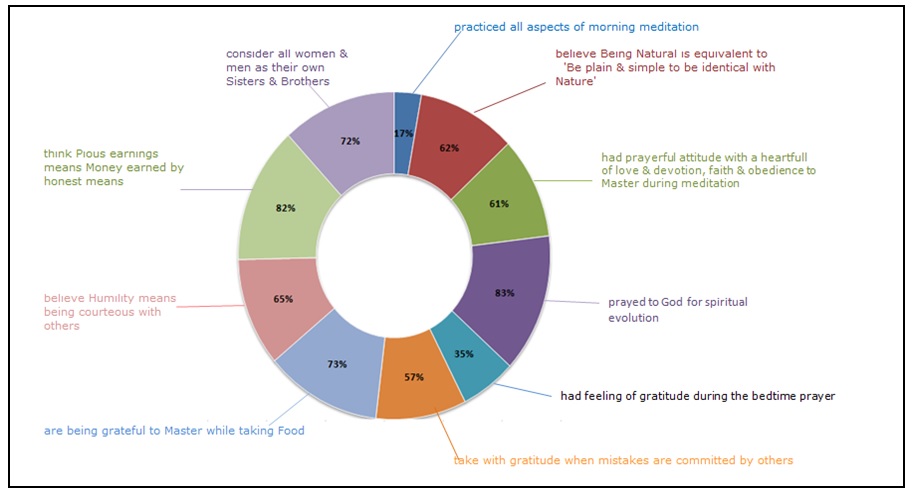Abstract
Our planet has been continuously changing in its lifetime. In recent decades, the increased entropy is beginning to have a magnified effect on us. In general, every sphere of our mother earth is effected – Environment (air, water, soil, temperatures, rainfall), living creatures (rapid extinction of plants and animals with growing human population), social (family structures, general unrest, migration from rural to urban, migration across countries and continents), political (shifts in countries, unrest, combative), business (expansion, consolidation, domination) etc. While the degradation is proceeding at a rapid pace, there is hope due to rapid developments by humans in the areas of science, technology, health etc. What is particularly encouraging is the increased awareness and adoption of methods developed by humans to evolve themselves.
The inner world of humans and the external world on Earth are undergoing a highly accelerated change not seen earlier. These worlds influence each other as they are but layers within our universe with each layer affecting the next. The individual and collective human consciousness has to evolve and expand to bring stability in the environment. An effective way for the evolution of human consciousness is though meditation with transmission (Pranahuti). This paper presents the effect of Heartfulness meditation on human consciousness. A random sample of 725 was drawn from a population of 25000 participants at Kanha Shantivanam, Hyderabad. The participants were asked to evaluate their changes on Physical, Emotional, Mental and Spiritual (PEMS) states after the 4th group meditation session. The survey questions also included the regular practice of all the aspects of Heartfulness meditation such as morning meditation, rejuvenation in the evening and connecting to the self (prayer meditation) during bedtime. There was a significant improvement in the positive emotions like joy, happiness, compassion and love, and reduction in the negative emotions like sadness, anger and guilt.
I. Introduction
Anxiety, stress, mental tensions and their accompanied psychosomatic illnesses have become almost inevitable companions of human life. Today, world population is reeling under chronic stress due to high level of peer pressure and competitiveness, compromised lifestyle and self-imposed “Race to Nowhere”. Yoga is a psycho-somatic-spiritual discipline for achieving union & harmony between our mind, body and soul and the ultimate union of our individual consciousness with the universal consciousness. Scientifically defining, yoga is mind-body technique, which involves the components of breath manipulation (Pranayama), meditation and set of physical exercises (Asanas).
Yogic practices have been practiced for thousands of years originating from Indian subcontinent. The great Indian sage, Patanjali codified the systematic and disciplined practice of Yoga and described it as Ashtanga (eight-limbed) yoga. The first two limbs of Ashtanga yoga are Yama and Niyama, which are ethical code and personal discipline for the development of our moral, spiritual and social aspects. Third and fourth limbs are Asana and Pranayama that help in our physical development and improvement of physiological functions. Fifth and sixth limbs are Pratyahar and Dharna for controlling our senses and making our mind one-pointed, calm and alert. The final two limbs of Dhyana and Samadhi result in inner peace, balance, tranquility, higher level of consciousness and the ultimate union of our individual consciousness with the Universal Consciousness (Ministry of External Affairs, 2015). The result is unfolding of a unique spiritual personality that is a blessing for the whole humanity.
According to Dr Kamlesh Patel (Heartfulness Institute 2017), Yoga is not religion, not philosophy, but experience. Rishi Patanjali says that the definition of Yoga means ‘one that joins.’ Our lower consciousness is elevated to the highest consciousness so that we can resonate with the divine principle, and thus unification of humanity is within reach. This elevation of consciousness, harmony, and balance result in a state of inner good health.
Great creativity, intuition, clarity of mind and skills in problem solving can be facilitated by yoga of the body (Hatha Yoga), yoga of the mind (Raja Yoga), yoga of the intellect (Gnana Yoga), or Yoga of selfless action (Karma Yoga). Among these, Raja Yoga is known as the King of yoga’s, as it refers to the mind. It is the mind which really initiates human action. Hence there is a need to regulate our mind and an effective tool to regulate our mind is meditation. To enable meditation for long durations, without fatigue, hunger, thirst, or weakness, the sages of India developed postures (asanas) and breathing exercises (Pranayama). These two steps gave extraordinary health benefits which made them so popular all over the globe. The Heartfulness meditation is a very ancient meditation technique, refined and simplified to suit the demands of modern human beings. This fulfils a very vital need of the modern humans who are leading a much greater tension and stressed life without finding much time for rejuvenation of the mind and much less time to solve the problems of society – ecological, economic or ethical crises.
The special features of the method include the help of Prana- Ahuthi, or yogic transmission from the spiritual guide to the student. Yogic transmission prioritizes a rejuvenation of the heart which makes it very effective. Purification of the mind and the heart – emotional and spiritual heart – is considered to be very important for the final success in raising humanity to higher levels of consciousness. The simple practice of Heartfulness meditation can be easily practiced, and they quickly see improvement in their daily lives. An increased sense of health, happiness, and harmony is achieved by this simple practice of meditation. (Heartfulness Institute 2017).
Any country requires youth to become very capable of managing themselves as they will become the mainstream of the society in the years ahead and will determine the course of life on Earth. For that, change and transformation has become an urgent need since as we change and the world changes around us. A very efficacious way to bring change is by meditation. Though, many meditation practices are available, this paper focuses on the effect of Heartfulness meditation on human consciousness. This system of meditation is a heart based system and hence the name “Heartfulness Meditation”, being practiced by over 2,000,000 practitioners in over 130 countries. It consists of relaxation, reconnecting, meditation and rejuvenation. A random sample of 800 aspirants of age group 18-70 years and practicing from 4 months to 40 years were considered to evaluate the effect of meditation on human consciousness. It was found that there was a significant improvement in the positive attitudes and reduction in the negative tendencies.
The paper is organized as follows. Section II gives a brief overview of meditation. Section III deals with the definition and evolution of consciousness. Section IV deals with the methodology adopted to observe the shift in the consciousness level of a meditation practitioner. Section V deals with results and discussions. The paper is concluded in section VI.
II. Meditation –Discover the self
The English word “meditation” stems from meditatum, a Latin term meaning “to ponder.” Although we can’t know when, exactly, people began to meditate, experts agree that the practice probably began many thousands of years ago, before the birth of modern civilization and is progressively being used today for mental, spiritual and health benefits (mindworks, 2021). Walsh defined meditation as the “conscious training of attention aimed at modifying mental processes so as to elicit enhanced states of consciousness and wellbeing” Walsh, R (1982), Yogananda defined meditation as “the application of concentration solely to know God”, Robert Drummond McNaughton (2003). Basically, the meditator, through a process of disciplined concentration, seeks to remove the focus of his mind from the outside world, and by looking within, get beyond feelings, habits, and desire itself to a point that unifies all experiences McGreal, I. P. (1995). Meditation is a process which prepares us to receive the grace of the Almighty through the preparation of the mind, conditioning of the mind, regulation of the mind, because the mind is the most potent thing that we have (Shri Ram Chandra Mission, 1999).
It is an effective tool for reducing the stress, anxiety, depression etc. To be able to listen to our inner self takes a lot of practice and this practice is best known as meditation. When we meditate our internal thought processes get reflected in what we experience outside. Further, it advocates the fact that when we clean up our own internal systems, the external systems that we deal with will show up cleaned. In essence, the concept quoted as “The inner world creates the outer world” is the MANTRA. The regular practice of meditation increases our awareness of ourselves and enables us to live fully in each moment with contentment, joy and love and also improves the quality of life. Though there are diverse meditation techniques that vary in the methods adopted to understand the self, the ultimate goal is to elevate our consciousness.
Heartfulness meditation is centered in the heart and is for everyone, independent of religions and religious beliefs. It takes us deeper into the realm of the center of our human existence – the Heart. Our entire life is led by feelings and inspirations, and that is the role of the heart. When we manage to listen to the feelings and capture the inspiration that comes from within, we can master our life by listening to the heart again and again. The whole exercise of fine-tuning the heart with the mind is through this meditation on the heart. It has no affiliation with anything in the world as far as religions are concerned, though in every religion the heart plays a major role (Heartfulness Institute, 2016).
III. Evolution of Consciousness
Consciousness is the state of being aware of something internal within the mind, or external within the physical or sensory world. It can be defined as an individual’s unique awareness of their thoughts, feelings, sensory experiences and environment (Yogapedia, 2016).
The fundamental problem of consciousness seemed to be related to the question who are we? How we answer this will decide if consciousness is a property of matter, the ground of all existence, or the soul or a timeless conscious Mind or Spirit manifesting itself through matter (Tina Lindhard 2019), Our physical body made of flesh and blood that is the most solid part of us. While it changes a little bit, according to how we live our lives, it doesn’t change much. Physical evolution happens over longer periods than one lifetime, so we cannot expect our physical body to evolve in this life. Our subtle body, also known as the astral or mental body, is associated with energy and vibration. This is called as the heart and mind. The third body is our causal body, the cause of our existence, which is also known as the soul. The causal body is associated with the absolute state of nothingness, the substratum of existence. This causal body is pure, unchanging and immutable, so it is does not need to evolve.
While the physical and casual bodies could not be evolved, only body that can evolve is the subtle body (Kamlesh D Patel, 2017 December). The subtle body changes according to how we purify and simplify it, so that the joy of the soul shines and radiates from within, and through this process we find the evolution of consciousness (Kamlesh D Patel, 2016). The four main functions of the subtle body are:
- Chit or consciousness
- Manas or our contemplative faculty
- Buddhi or intellect
- Ahankar or ego
They work in an interactive way together to make up what we know as the mind. The evolution happens when the layers of complexities and impurities are removed and chakras are purified and awakened in our system. Unless and until we meditate properly and unless and until we regulate our minds properly, our consciousness will not evolve. We meditate to exercise and regulate the mind. An unregulated mind is pulled by wishes, desires, fears and habits, in many different directions. It is rajasic in nature and it becomes weak as it scatters energy in too many channels. When we meditate well, we regulate our minds so that our consciousness can expand and evolve. Out thinking, intellect and ego are refined and developed through meditation. Our thinking process would be simplified from many channels to one channel and the concentration would develop through the practice of meditation and we go deeper from thinking to feeling. Feeling gives us greater direct perception, greater intuition and ability to work with our emotions, so that we refine our lifestyle and integrate external behavior with inner states. We learn the art of observing and witnessing the play of our thoughts through meditation. This helps us to work with our emotions and reactions, especially when the ego is creating problems. We become more sensitive and alert. Another outcome of good meditation is that the ability to hold and nurture the meditative state throughout the day. This would help us to be in the constant state of awareness of the inner state and our canvas of consciousness cannot be spoilt. In the process of diving deeper within, intelligence becomes more and more heart-based. Intuition and inspiration develop as consciousness expands along the spectrum and buddhi is fine tuned, like a sensitive antenna picking up the signals of the heart. As a result, the intellect expands to include more and more wisdom. (Kamlesh Patel 2019).
In the next section, the methodology carried out to appreciate the shift in consciousness among the meditation practitioners from different parts of the world has been explained.
IV. Study Methodology
A random sample of 725 was drawn from a population of 25000 participants who had come to attend the meditation gathering at the world’s largest Heartfulness meditation center, Kanha Shantivanam, Hyderabad. The participants were asked to evaluate their changes on Physical, Emotional, Mental and Spiritual (PEMS) states after the 4th group meditation session. The survey questions also included the regular practice of all the aspects of Heartfulness meditation such as morning meditation, rejuvenation in the evening and connecting to the self (prayer meditation) during bedtime. The sample group was drawn from different parts of the world from different age groups ranging from 21 to 75 years and meditation practice ranging from 1 to 40 years. The facial expression, body movement were also captured during meditation to observe the effect of meditation on physical body.
V. Results and Discussions
This section discusses the results of an evaluation of PEMS before and after group meditation conducted with participants. It was found that most of the participants were physically stable during 45 to 60 minutes of meditation session. The images captured during group meditation are shown in figure 1. As seen in figure 1, in Heartfulness meditation, it is natural for the head to bow forward as we go into samadhi. The head bows to the heart.
(Figure 1: Physical state of the participants during meditation)
There was a significant improvement in the positive emotions like joy, happiness, compassion and love, and reduction in the negative emotions like sadness, anger and guilt. The results are depicted in figure 2.
(Figure 2: Effect of Heartfulness meditation on Physical condition)
It was found that 61 % of the respondents were physically stable before meditation and 75% of the respondents after group meditation. There was a significant reduction in the physical instability from 18% to 3% after the group meditation. The physical discomfort reduced from 19% to 4%.
(Figure 3: Effect of Heartfulness meditation on Positive Emotions)
When we suffer from ignorance, we are swinging from one emotion to the other. We are caught in duality, which inevitably leads to pleasure and pain, sadness and happiness. The equanimity needed to feel a sense of fulfillment and constant happiness is where there is no duality. When we meditate on Divine Light in the heart, duality gives way to unity. Unity brings forth calmness, steadiness and a state of being in love. So, if we undertake such a meditation on the heart called as Heartfulness meditation, supposing Divine Light is there, it leads to lovefulness!. i.e., positive emotions are enhanced among meditation practitioners. The positive emotions of the participants were also analyzed. It was found that 51% respondents felt enhancement in positive emotions. The results show that the regular practice of meditation enhances the positive emotions significantly.
(Figure4: Effect of Heartfulness meditation on Negative emotions)
On an average, only 3% of the respondents were having negative emotions like anger, restlessness or guilt after the meditation sessions; 28% of the respondents felt that they are restless before meditation and only 3% of the respondents felt that they are restless after group meditation.
Experience of Pranahuti (Transmission)
The effect of Pranahuti on mental distraction was also analyzed. This was assessed by the number of responses that affirmed the presence of intense, repetitive and obsessive thoughts. This is an indication of thoughts distracting an individual during meditation. Almost 90% of the respondents expressed that thoughts were not distracting them during meditation. This clearly shows that the Pranahuti aided meditation does have an impact on the thoughts.
(Figure 5: Effect of Heartfulness meditation on Mental Experiences)
(Figure 6: Effect of Heartfulness meditation on spiritual conditions)
The effect of Pranahuti on the thoughts was analyzed by assessing their subjective experience before, during and after meditation and 58% of the respondents felt either subtle, absorbed or freshness after meditation with yogic transmission while 11% of the respondents were agitated before meditation and it came down to 3% after meditation.
(Figure 7: Effect of Heartfulness Meditation on Negative emotions)
Negative emotions such as anger, restless and guilt have come down from 18 % to 3% on an average after the meditation sessions.
Effect of meditation on character formation
On an average, 61% of the respondents have been following the 10 maxims of our mission for character formation, which is an indication of the evolution of consciousness.
(Figure 8: Practice of 10 maxims)
VI. Conclusion
The objective of this paper was to study the effect of Heartfulness Meditation on consciousness of the Heartfulness practitioners. The practice of meditation contributes towards the progressive evolution of consciousness by creating the conditions for stilling the mind at deeper and deeper levels, and opening up the inner world. The findings from the study clearly indicate that the meditation does have positive impact on the Physical, Emotional, Mental and Spiritual (PEMS) conditions. Further investigation could be done by comparing the impact of meditation on PEMS conditions of practitioners and non-practitioners of meditation.
References
- Yoga: Its Origin, History and Development, Ministry of External Affairs (2015) https://www.mea.gov.in/search-result.htm?25096/Yoga:_su_origen,_historia_y_desarrollo, Retrieved December 5, 2021
- A simplified yoga for a busy lifestyle, Heartfulness Institute (2017), https://heartfulness.org/us/simplified-yoga-todays-busy-lifestyle/, Retrieved December 5, 2021
- A brief history of meditation (2021), https://mindworks.org/blog/history-origins-of-meditation, Retrieved December 5, 2021
- Walsh, R (1982), “ A model for viewing meditation”, Journal of Transpersonal Psychology, 14(1), 69-84, 1982
- Robert Drummond McNaughton (2003), “The use of Meditation and Intuition In Decision-Making: Reports from Executive Meditators”, Doctoral dissertation.
- McGreal, I. P. (1995), Great thinkers of the eastern world, New York: HarperCollins,
- Meditation (1999), http://www.sahajmarg.org/meditation
- Understanding and Practicing Heartfulness (2016), https://heartfulness.org/us/understanding-practicing-heartfulness/
- Consciousness (2016), https://www.yogapedia.com/definition/4955/consciousness
- Tina Lindhard (2019), “Consciousness from the Outside-In and Inside-Out Perspective”, Journal of Consciousness Explorations & Research, Vol. 10, Issue 3.
- Kamlesh D Patel (2017 December), The Evolution of Consciousness, Heartfulness, 7.
- Kamlesh D Patel (2016), The Evolution of Consciousness – Part 2, https://www.daaji.org/the-evolution-of-consciousness-part-2/
- Kamlesh Patel (2019), Designing Destiny, Westland Publications Pvt. Ltd.
Feature Image Credit : istockphoto.com
HinduMeditationTraditions&Techniques
Watch video presentation of the above paper here:
Disclaimer: The opinions expressed in this article belong to the author. Indic Today is neither responsible nor liable for the accuracy, completeness, suitability, or validity of any information in the article.

